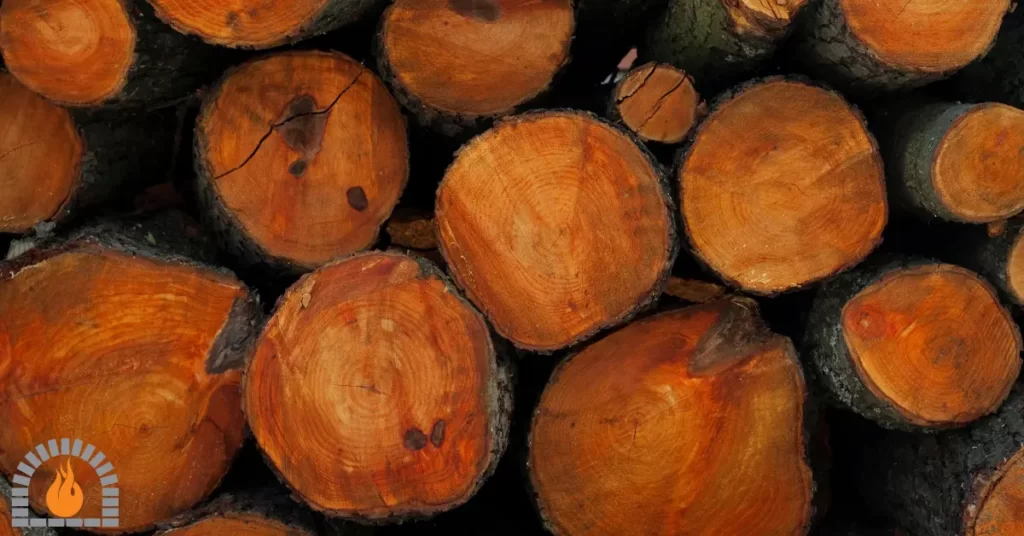As the crackling warmth of a fireplace or the inviting glow of a wood-burning stove draws us in during colder months, the choice of firewood becomes crucial. While seasoned veterans of the hearth may have their go-to favorites, the question of Is Alder Good Firewood? Often, it lingers in the minds of those seeking an optimal balance between efficiency, heat output, and overall performance.
Overview
Alder firewood is renowned for its easy splitting and short seasoning time, making it a convenient choice for individuals who prefer to split their firewood at home. However, it has a lower BTU output and a faster burn time, making it an excellent firewood option when mixed with other hardwoods.
Understanding Alder Wood:
Alder, scientifically known as Alnus, is a type of hardwood found in various parts of the world. Its popularity as a firewood choice has risen thanks to its unique characteristics.
Can you burn Alder wood? While not the densest hardwood, offers a respectable heat output. Its moderate calorific value makes it suitable for both heating and ambiance.
Is Alder Good Firewood?
Yes, alder is considered good firewood. It provides moderate heat, produces mild and sweet-smelling smoke, and is easy to split. However, ensure it is properly seasoned before use. When mixed with other firewood, alder is suitable for use in wood stoves, cooking, or smoking.

Pros of Alder as Firewood
- Adequate warmth for heating purposes.
- Soft and easy to split, making it accessible for various users.
- Alder wood tends to dry relatively fast, promoting efficient burning.
- Provides a pleasant and mild scent when burned.
- Burns cleanly with minimal creosote buildup, promoting safety and indoor air quality.
- Widely available in some regions, making it a convenient and cost-effective option.
- Ideal for smoking meats, imparting a mild flavor without overpowering.
- Fast-growing and, if harvested sustainably, considered more eco-friendly.
Cons of Alder Firewood
- Provides less heat per unit compared to denser hardwoods.
- Tends to burn faster, requiring more frequent reloading.
- Better suited for shorter burning periods.
- This can increase ash production, requiring regular cleaning.
- Produces fewer long-lasting embers, requiring more attention to maintain heat.
- It may not be as accessible in certain areas.
- Not the best choice for high-intensity, long-lasting fires.
- Less dense, requiring more space for a given amount of heat.
Related Post: Is Hemlock Good Firewood?
How to Use Alder as Firewood Efficiently.
Alder is a hardwood that burns well and produces moderate heat. It is commonly used for smoking meats due to its mild flavor, but it can also be used as firewood.
Here are some tips on how to use alder as firewood efficiently:
- Season the Wood:
- Allow the alder wood to season or dry out before burning. Seasoned wood burns more efficiently and produces less creosote, which can build up in your chimney and pose a fire hazard. Ideally, wood should be seasoned for at least 6-12 months.
- Split the Wood:
- Splitting the alder wood into smaller pieces increases the surface area, allowing for better airflow and faster combustion. Smaller pieces also ignite more easily.
- Store Wood Properly:
- Store the seasoned alder wood in a dry, well-ventilated area to prevent it from absorbing moisture. Damp wood is harder to ignite and produces more smoke.
- Use Kindling:
- Start the fire with smaller pieces of dry kindling to establish a good bed of hot coals. Once you have a hot base, add larger pieces of alder wood.
- Mix with Other Hardwoods:
- While alder is a good burning wood, mixing it with other hardwoods like oak or maple is often recommended. This combination can provide a longer-lasting, hotter fire.
- Build a Proper Fire:
- Stack the wood loosely to allow air circulation. Avoid packing the wood too tightly, which can impede airflow and reduce combustion efficiency.
- Control Airflow:
- Adjust the airflow in your wood-burning appliance to regulate the combustion rate. Some stoves or fireplaces have dampers or air controls that allow you to control the amount of oxygen reaching the fire.
- Monitor the Fire:
- Regularly check the fire to ensure it’s burning efficiently. If you notice a lot of smoke, it may indicate that the wood is not burning completely. Adjust the airflow or add smaller pieces of wood as needed.
- Maintain a Clean Chimney:
- Regular chimney maintenance is essential to prevent the buildup of creosote. Creosote is a byproduct of incomplete combustion and can lead to chimney fires. Have your chimney cleaned and inspected regularly.

Related Post: Can You Burn Cinnamon?
Affiliate Disclosure: Fireplaceadviser.com is a participant in the Amazon Services LLC Associates Program. We may earn a commission when you click on certain links on this site and purchase.

Hello!! I am Jamal Khan. I often fix my home electric heaters and gas stove problems and research the common issues in the heating units to improve my knowledge and expertise. The aim of establishing fireplaceadviser.com is to share my expertise and knowledge with my audience.








